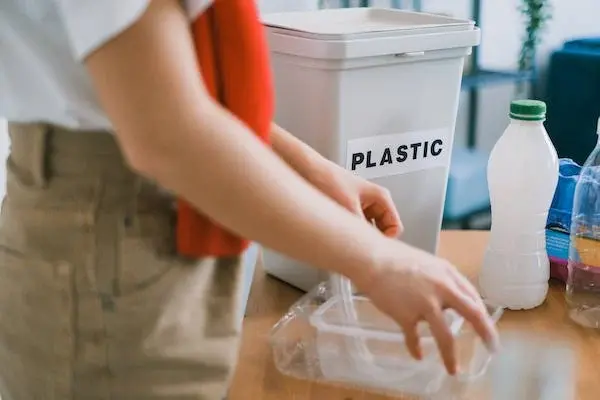Your home should be where you feel safe from the outside world. But there are chances that it’s a prominent source of long-term health problems for you. Several harmful chemicals lurk in your home and seriously threaten your family.
The EPA states that nearly all of the 40,000 chemicals in everyday consumer products, such as cleaning agents and furniture, do not undergo rigorous assessment. Exposure to these chemicals can cause health issues, such as asthma, allergies, and cancer.
Kids and pets are more sensitive to such toxicity lingering in your home. To make your home non-toxic, implement a few simple changes. It will make a significant impact on your health and the environment.
Here are a few things you can do to make your house a cleaner and healthier environment:
Table of Contents
Switch to Non-Toxic Cleaning Products
The bulk of traditional household cleaners contains harmful ingredients. These chemicals cause allergies, respiratory problems, skin irritation, and cancer. According to a study by the Environmental Working Group, many typical household cleaning products contain carcinogenic chemicals, reproductive toxins, and hormone disruptors.
The good news is that safer and more eco-sustainable substitutes for these products exist. Non-toxic cleaning solutions contain natural, organic, and biodegradable ingredients. They are gentle on your skin, health, and the environment. They are free of toxic materials such as ammonia, chlorine, and phthalates, which have been linked to health issues.
Some examples of natural and organic cleaning products that you can use include vinegar, baking soda, essential oils, and castile soap. You can also look for eco-friendly brands that use plant-based ingredients.
Switching to non-toxic cleaning products benefits your health and the planet. According to a report by Grand View Research, the global household green cleaning products market is estimated to grow from USD 259.84 billion in 2021 to USD 398.05 billion by 2027 at a CAGR of 7.36%. This growth is attributed to the increasing awareness and adoption of eco-friendly and sustainable cleaning products.
Practice Organic Landscaping
As a homeowner, you likely take pride in your beautiful yard and garden. However, chemical-based products are dangerous to your health and the environment. The recent Roundup lawsuit update serves as a stark reminder of this fact.
Glyphosate, the main ingredient in Roundup, is potent herbicide millions of homeowners, landscapers, and farmers use to kill weeds. However, studies have linked glyphosate to congenital disabilities and other health problems. Over 10,000 lawsuits have been filed against Monsanto, the maker of Roundup.
So, how can you avoid exposing yourself and your family to these toxic chemicals? The answer is organic landscaping. Organic landscaping uses natural, non-toxic products and methods to create a beautiful and healthy outdoor environment.
Instead of using synthetic fertilizers and pesticides, use compost, manure, and other organic materials to nourish your soil and plants. Use natural pest control methods such as companion planting, crop rotation, and beneficial insects to keep pests at bay.
Organic landscaping benefits not only your health but also the environment. Avoiding synthetic chemicals can help prevent water and soil contamination, which can harm wildlife and plant life.
Improve Air Quality
Improving the air quality in your home can significantly impact your overall being and well-being. You can transform your home into a non-toxic sanctuary by taking simple steps.
- Start by opening your windows and doors to allow fresh air to circulate throughout your home. This will help to remove any stale or stagnant air that may be trapped inside.
- Invest in an air purifier to filter out harmful pollutants and allergens. Look for models with HEPA filters to capture even the smallest particles.
- Reduce the amount of chemical-based products you use in your home. Instead, choose natural cleaning solutions and personal care products free of harsh chemicals and fragrances.
- Ensure your home is well-ventilated using exhaust fans in your bathroom and kitchen. This will help to remove moisture and prevent the growth of mold and mildew.
- Regularly replaces the air filters in your heating and cooling system to ensure they function at their best. Consider upgrading to a high-efficiency filter to improve air quality further.
By taking these steps, you can create a healthier and more comfortable living place for yourself and your loved ones. Your home will become a haven that promotes wellness and rejuvenation.
Choose Non-Toxic Building Materials
Are you aware that many conventional building materials emit harmful toxins? And their emission can negatively affect your health and the environment. If planning to build or renovate your home, consider choosing non-toxic building materials to create a safer and healthier living space.
Non-toxic building materials do not release harmful chemicals or substances into the air or the environment. Examples of non-toxic materials include natural wood, bamboo, cork, natural stone, clay, and plaster.
A study found that exposure to volatile organic compounds (VOCs) from building materials and other sources can contribute to indoor air pollution and health problems. Using non-toxic building materials can significantly reduce indoor air pollution and the risk of health problems such as respiratory issues, allergies, and cancer.
When choosing non-toxic building materials, look for products certified by reputable organizations like Green Seal, Cradle to Cradle, and the Forest Stewardship Council. These certifications ensure that the materials meet high standards for sustainability, environmental friendliness, and safety.
Use Organic Bedding
Traditional bedding materials like cotton, wool, and down are often treated with chemicals, including pesticides, flame retardants, and formaldehyde. These chemicals can off-gas into the air and cause health problems, especially for people with allergies or respiratory issues.
Organic bedding, on the other hand, is made from natural materials. The natural materials in them are grown and processed without the use of harmful chemicals. This means that your sheets, comforters, and pillows will be free from toxins that can affect your health and well-being. Organic bedding is often more comfortable and durable than traditional bedding and can help you sleep better.
There are many types of organic bedding, including cotton, linen, hemp, and bamboo. Each material has its unique properties and benefits. It’s worth researching to find the one that’s right for you.
When shopping for organic bedding, look for certifications like GOTS (Global Organic Textile Standard) or OEKO-TEX, which ensure that the products are genuinely organic and free from harmful chemicals.
Conclusion
In conclusion, transforming your home into a non-toxic setting may seem daunting. But it is a worthwhile investment in your health and well-being. By making small changes such as choosing natural cleaning products, buying organic produce, and using air-purifying plants, you can significantly reduce your exposure to harmful chemicals and improve the air quality in your home.
Investing in a good water filtration system, avoiding plastic containers and food packaging, switching to natural pest control methods, and opting for furniture made from natural materials make a huge difference. Make conscious choices today and enjoy a healthier, safer, and more peaceful home.

